-
White supremacist propaganda and events soared in 2018
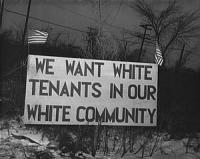
White supremacists dramatically stepped up their propaganda efforts targeting neighborhoods and campuses in 2018, far exceeding any previous annual distribution count for the United States and showing how these extremist groups are finding ways to share hateful messages while hiding the identity of individual members.
-
-
European ethno-nationalist and white supremacist movements thrive
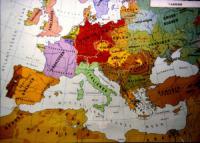
More than seventy years after the defeat of Nazi Germany, ethno-nationalist and white supremacist movements in Europe continue to thrive. They include far-right political parties, neo-Nazi movements, and apolitical protest groups. Some groups openly espouse violent white supremacy, while others have propagated their radical stances under the guise of populism. Though not all of these groups directly link their ideologies to Nazism, their propaganda portrays immigrants and ethnic minorities in a similar manner to how Nazi propaganda portrayed Jews, blaming them for national economic troubles and depicting them as a serious threat to the broader national identity.
-
-
Warrior vs. guardian policing
The pros and cons of policing methods have been heavily debated for decades in the United States. Now, a team of researchers has created a model to measure the differences between two distinct approaches to policing — the warrior approach and the guardian approach.
-
-
Deradicalization and countering violent extremism
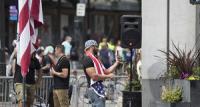
Since the early 2000s, more than fifty countries have developed initiatives to counter violent extremism (CVE). Despite this, there still remains a lack of strong evidence on which interventions are effective. Researchers have reviewed the literature on CVE programs to give examples of what good CVE practice should look like.
-
-
Doctor-affiliated PACs fund candidates opposing gun safety policies
Researchers found that physician-affiliated political action committees provided more financial support to candidates who opposed increased background checks, contrary to many societies’ recommendations for evidence-based policies to reduce firearm injuries.
-
-
Violent video games not associated with adolescent aggression: Study
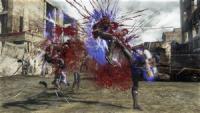
Researchers have found no relationship between aggressive behavior in teenagers and the amount of time spent playing violent video games. “The idea that violent video games drive real-world aggression is a popular one, but it hasn’t tested very well over time,” says lead researcher Professor Andrew Przybylski, Director of Research at the Oxford Internet Institute. “Despite interest in the topic by parents and policy-makers, the research has not demonstrated that there is cause for concern.”
-
-
What mass shootings do to those not shot: Social consequences of mass gun violence
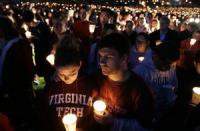
Mass shootings seem to have become a sad new normal in the American life. They happen too often, and in very unexpected places. Concerts, movie theaters, places of worship, workplaces, schools, bars and restaurants are no longer secure from gun violence. Still, hardly any attention is paid to the stress of such events beyond the immediate victims — on the rest of society. That includes those who survived the shooting; those who were in the vicinity, including the first responders; those who lost someone in the shooting; and those who hear about it via the media.
-
-
Reducing Illinois gun violence
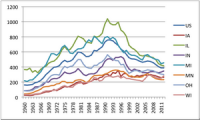
Illinois could reduce the number of people killed each year by gun violence by implementing ten policies supported by available research, according to a new report. The Johns Hopkins report identifies weaknesses or gaps in current Illinois law and offers recommendations to reduce gun violence.
-
-
After Aurora shooting, lawmakers revive proposal to disarm unlawful gun owners
Illinois revokes thousands of gun licenses every year. But it’s rare for law enforcement to remove firearms from owners barred from having them. Legislators in Illinois are scrambling to address a gap in state law that many have blamed for allowing the gunman who killed five people in Aurora last week to keep his handgun even after he was banned from possessing firearms.
-
-
U.S. Coast Guard officer to be charged with mass terrorism plot
Christopher Paul Hasson, a U.S. Coast Guard officer will appear in court today (Thursday), charged with plotting a massive, 2-prong attack modeled after the 2011 Anders Behring Breivik’s terrorist attack in Norway. Breivik killed eight people in Oslo as a diversion, before killing 69 teenagers in a summer camp organized by the Norwegian Social Democratic Party. Hasson compiled a hit list of liberal politicians, Supreme Court judges, and journalists – but his violent plans extended to trying to “establish a white homeland,” and using biological weapons to “kill almost every last person on Earth.”
-
-
U.S. hate groups hit record number last year amid increased violence
American hate groups had a bumper year in 2018 as a surge in black and white nationalist groups lifted their number to a new record high, the Southern Poverty Law Center said in a report issued Wednesday. The increase was driven by growth in both black and white nationalist groups, the SPLC said. The number of white nationalist groups jumped from 100 to 148, while the number of black nationalist groups — typically anti-Semitic, anti-LGBTQ and anti-white — rose from 233 to 264. Some conservative groups have accused the SPLC of unfairly labeling them as “hate groups,” and last month, the Center for Immigration Studies sued the SPLC for “falsely designating” it as a hate group in 2016, saying the SPLC has produced no evidence that the group maligns immigrants as a class.
-
-
Disguises are surprisingly effective
Superficial but deliberate changes in someone’s facial appearance – such as a new hairstyle or complexion - are surprisingly effective in identity deception, new research suggests.
-
-
School shooters usually show these signs of distress long before they open fire, our database shows
Our initial analysis of the school shooting data found some noteworthy patterns. All mass school shooters since 1966 had a large number of risk factors for violence. Forty-five percent had witnessed or experienced childhood trauma, 77 percent had mental health concerns, as evidenced in a prior diagnosis, previous counseling or hospitalization, or medication use, and 75 percent had an interest in past shootings, as evidenced in their writing, social media posts or other activities. The majority of mass school shooters – 87 percent – showed signs of a crisis, as exhibited in their behavior, before the shooting. Seventy-eight percent revealed their plans ahead of time, often on social media. As juveniles, they also used guns that they stole from parents, caregivers and other significant adults in their lives. Our analysis found that about 80 percent of mass school shooters were suicidal. These findings make it clearer why current strategies are inadequate.
-
-
Mental illness not to blame for gun violence: Study
Counter to a lot of public opinion, having a mental illness does not necessarily make a person more likely to commit gun violence. According to a new study, a better indicator of gun violence was access to firearms. Researchers found that the majority of mental health symptoms examined were not related to gun violence. The researchers found instead was that individuals who had gun access were approximately 18 times more likely to have threatened someone with a gun. Individuals with high hostility were about 3.5 times more likely to threaten someone.
-
-
Hardcore white supremacists elevate Dylann Roof to cult hero status
When Dylann Roof murdered nine people in a racially motivated shooting spree at the Emanuel African Methodist Episcopal Church in Charleston, South Carolina, in 2015, reactions from fellow white supremacists were all over the map. While some praised the shootings, others claimed the attack was fabricated by the government or Jews to cast a bad light on white supremacists. Within the past two years, a number of zealous Roof fans and would-be copycats have emerged, including some who have crossed the line into criminal activity:
-
- All
- Regional
- Water
- Biometrics
- Borders/Immig
- Business
- Cybersecurity
- Detection
- Disasters
- Government
- Infrastructure
- International
- Public health
- Public Safety
- Communication interoperabillity
- Emergency services
- Emergency medical services
- Fire
- First response
- IEDs
- Law Enforcement
- Law Enforcement Technology
- Military technology
- Nonlethal weapons
- Nuclear weapons
- Personal protection equipment
- Police
- Notification /alert systems
- Situational awareness
- Weapons systems
- Sci-Tech
- Sector Reports
- Surveillance
- Transportation
Advertising & Marketing: advertise@newswirepubs.com
Editorial: editor@newswirepubs.com
General: info@newswirepubs.com
2010-2011 © News Wire Publications, LLC News Wire Publications, LLC
220 Old Country Road | Suite 200 | Mineola | New York | 11501
Permissions and Policies
Editorial: editor@newswirepubs.com
General: info@newswirepubs.com
2010-2011 © News Wire Publications, LLC News Wire Publications, LLC
220 Old Country Road | Suite 200 | Mineola | New York | 11501
Permissions and Policies
